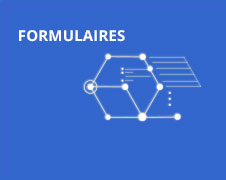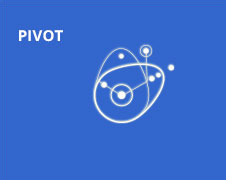Levon Abrahamyan
Virology, Genetics
- Professeur agrégé
-
Faculté de médecine vétérinaire - Département de pathologie et microbiologie
Pavillon 3200, rue Sicotte - Aile A, room 3909
Media
Profile
Research expertise
The long-term goal of my research program is to better understand molecular mechanisms of interactions between animal viruses and their hosts in order to develop new strategies for effective control of viral infections. In my laboratory, we study molecular mechanisms of virus-host interactions of different viruses: the porcine reproductive and respiratory syndrome virus (PRRSV), the porcine epidemic diarrhea virus (PEDV, a coronavirus), the Aleutian mink disease virus (AMDV, a parvovirus), the porcine influenza virus, various arboviruses (Zika, dengue, etc.). Additionally, we are interested in studying viral pathogens that infect the honeybees (virome studies). Host-virus interactions are highly dynamic and may involve multiprotein complexes. My group is using cutting-edge molecular biology, microscopy, proteomics, classical and molecular virology approaches to decipher the interplay of the key molecular factors of the virus infection that contribute to the unique pathogenesis of the animal viruses that are important for human and animal health. I believe that science popularization plays an important role in enhancing public service, promotes scientific literacy and awareness of global health.
Biography
Le Dr Abrahamyan détient un Ph. D. en génétique de l’Institut de Génétique Générale et L’Université d'État d'Erevan (Russie et L’Arménie; 1990), avec une formation supplémentaire Docteur ès sciences (D.Sc.) en génétique moléculaire de l'Institut de Génétique Moléculaire de L'Académie des sciences de Russie (Russie; 1995) et possède une expérience postdoctorale très riche.
Il a œuvré en recherche au sein de plusieurs laboratoires de renommée internationale (USA, Canada, Russie et Colombie) et a occupé un poste de professeur et chercheur senior à L'Université Charles de Prague en République Tchèque.
Le Dr Abrahamyan est en poste à la FMV depuis janvier 2015. Ses recherches sont variées, mais son activité de recherche principale est la compréhension de la biologie des virus touchant les animaux et les hommes et les interactions complexes entre les différents virus et l'hôte.
Awards and recognitions
Bravo Recherche : Édition spéciale COVID-19
education
- 1995 — D. Sc. — Génétique — Institute of Molecular Genetics, Russian Academy of Sciences
- 1990 — Ph.D. — Génétique — Institute of General Genetics, Yerevan State University
- 1986 — M.Sc. — Génétique — Institute of General Genetics, Yerevan State University
- 1984 — B.Sc. — Biologie et autres sciences connexes — Institute of General Genetics, Yerevan State University
For more information…
-
Le Centre de recherche en infectiologie porcine et avicole (CRIPA)
Le Centre de recherche en infectiologie porcine et avicole (CRIPA) vous souhaite la bienvenue. Ce centre est situé à la Faculté de médecine vétérinaire de l’Université de Montréal.
-
Le Groupe de recherche sur les maladies infectieuses en production animale (GREMIP)
Les travaux de recherche des membres du GREMIP portent principalement sur la pathogénie des infections bactériennes et virales animales. En mai 2016, le GREMIP a reçu le Prix du recteur catégorie Collaboration de l'Université de Montréal. Ce prix récompense une équipe qui, par la cohésion de ses membres et les efforts de chacun fait preuve d’une performance exceptionnelle dans l’atteinte d’un objectif commun ou dans la réussite d’un projet.
-
Le Groupe de recherche en épidémiologie des zoonoses et santé publique (GREZOSP)
Le Groupe de recherche en épidémiologie des zoonoses et santé publique (GREZOSP) est un rassemblement de chercheurs et d’organisations dont la mission est de promouvoir la recherche sur des problématiques de santé publique et de santé animale au niveau des populations afin d’orienter les actions collectives et les politiques publiques.
Affiliations and responsabilities
Teaching and supervision
Teaching
Courses taught (current session only)
- MMV-70001 – Ateliers de recherche 1
- MMV-70002 – Ateliers de recherche 2
- MMV-70003 – Ateliers de recherche 3
- MMV-70004 – Ateliers de recherche 4
- MMV-70005 – Ateliers de recherche 5
- MMV-70006 – Ateliers de recherche 6
- PTM-6677 – Ateliers de recherche
- PTM-6702 – Maladies virales émergentes et zoonotiques
- PTM-6702 – Maladies virales émergentes et zoonotiques
Programs
Student supervision
Theses and dissertation supervision (Papyrus Institutional Repository)
The dual role of Haemonchus contortus ABC transporters in macrocyclic lactone resistance and their extrusion activity on the parasite's lipidomics
Cycle : Master's
Grade : M. Sc.
Decoding protein networks during porcine reproductive and respiratory syndrome virus infection through proteomics
Cycle : Master's
Grade : M. Sc.
Decoding protein networks during porcine epidemic diarrhea virus (PEDV) infection through proteomics
Cycle : Master's
Grade : M. Sc.
Projects
Research projects
Identification des interactions moléculaires hôte-pathogène par une approche systémique renforcée par la microscopie à super-résolution
Appui au Centre de recherche en infectiologie porcine et avicole (CRIPA)
Centre de Recherche en Infectiologie Porcine et Avicole (CRIPA)
Appui au Centre de recherche en infectiologie porcine et avicole (CRIPA)
Appui au Centre de recherche en infectiologie porcine et avicole (CRIPA)
Appui au Centre de recherche en infectiologie porcine et avicole (CRIPA)
Nouvelles Initiatives du CRIPA en partenariat avec IRSST
Appui au Centre de recherche en infectiologie porcine et avicole (CRIPA)
Identification des interactions moléculaires hôte-pathogène par une approche systémique renforcée par la microscopie à super-résolution
Studies on Molecular Mechanisms of HostPathogen Interactions of Nidoviruses of Veterinary Importance
Acquisition of an ultracentrifuge to support research in the field of veterinary infectious diseases
Centre de Recherche en infectiologie porcine et avicole (CRIPA) / Regroupements stratégiques
Studies on Molecular Mechanisms of HostPathogen Interactions of Nidoviruses of Veterinary Importance
Description
The proposed program will advance fundamental knowledge about the molecular
mechanisms of virus-host interactions of important animal RNA viruses united in the Nidovirales
order. The porcine reproductive and respiratory syndrome virus (PRRSV) and the porcine
epidemic diarrhea virus (PEDV) are nidoviruses responsible for severe agricultural economic losses
and considered to be the primary emerging livestock pathogens in Canada and globally. Although
the hosts have developed multiple immune defense systems that could fend off viral infections and
control viral disease, viruses have evolved to invade host cells and hijack the host cellular machinery
in order to survive and replicate. Thus, understanding how viruses attach and enter target cells, how
viruses establish a fine-tuned balance between host and virus genome translation, how viruses traffic
their genomes and proteins to the sites of virions assembly, and modulate host innate response, will
uncover novel targets for antiviral therapies and control viral spread.
Development of Next Generation Vaccine for Aleutian Disease in mink
Amélioration des services de génomique en infectiologie animale et de la banque de données centralisées des séquences québécoises du virus du syndrome reproducteur et respiratoire porcin (BCSQ)
Acquisition of a highspeed highvolume floor centrifuge to support research in the field of veterinary infectious diseases
Outreach
Publications and presentations
Publications
Markarian, N.M.; Galli, G.; Patel, D.; Hemmings, M.; Nagpal, P.; Berghuis, A.M.; Abrahamyan, L.* and Vidal, S.M*. Identifying Markers of Emerging SARS-CoV-2 Variants in Patients with Secondary Immunodeficiency. Frontiers in Microbiology, 2022. doi: 10.3389/fmicb.2022.93398. *Equally contributed co-corresponding authors
Vázquez-Valadez, V.H., Hernández-Serda, A., Jiménez-Cabiedes, M.F., Aguirre-Vidal, P., González-Tapia, I., Carreño-Varga,s L., Alarcón-López, Y.A., Espejel-Fuentes, A., Martínez-Soriano, P., Lugo Álvarez., M., Velázquez -Sánchez A.M., Markarian, N.M., Angeles, E., and L. Abrahamyan*. Evaluation of inhibitory activity in silico of in house thiomorpholine compounds between the ACE2 receptor and S1 subunit of SARS-CoV-2 spike. Pathogens, 2021 Sep 17;10(9):1208. doi: 10.3390/pathogens10091208. Impact Factor 4.066. *Corresponding author
Markarian N.M. and L. Abrahamyan*. AMDV Vaccine: Challenges and Perspectives. Viruses, 2021; 13(9):1833. https://doi.org/10.3390/v13091833. Impact Factor 5.127. *Corresponding author
Zakharova O.I.*, Titov I.A., Gogin A.E., Sevskikh T.A., Korennoy F.I., Kolbasov D.V., Abrahamyan, L.* and A. Blokhin. African Swine Fever in the Russian Far East (2019-2020): Spatio-Temporal Analysis and Implications for Wild Ungulates. Frontiers in Veterinary Science, 2021. 8:882; doi: 10.3389/fvets.2021.723081. Impact Factor 3.412. *Co-corresponding authors.
Dai X., Zhang X., Ostrikov K., and Abrahamyan L. Host receptors: the key to establishing cells with broad viral tropism for vaccine production. Critical Reviews in Microbiology, 2020 Mar; 46(2):147-168; doi: 10.1080/1040841X.2020.1735992.2020. Impact Factor 8.641.
Couture É.L., Ferrell S.T., Desmarchelier M., Hamelin M.È., Sánchez Mendoza L.J., Carbonneau J., Abrahamyan L., Boivin G., Lair S. Human parainfluenza 2 related illness and a death in a group of captive western lowland gorillas (Gorilla gorilla gorilla). J Zoo Wildl Med., 2019 Sep;50(3):713-717; doi: 10.1638/2018-0237. Impact Factor 0.776.
Soldatova, I., T. Prilepskaja, L. Abrahamyan, J. Forstová and S. Huérfano. Interaction of the mouse polyomavirus capsid proteins with importins is required for efficient import of viral DNA into the cell nucleus. Viruses, 2018, 10(4), 165; doi:10.3390/v10040165. This paper was highlighted by the editors and one of the images served as a cover page. Impact Factor 5.127.
Churbanov*, A. and L. Abrahamyan*. Preventing common hereditary disorders through time separated twinning. Special Issue: Molecular and Regenerative Medicine. BioNanoScience (Springer), March 2018, Volume 8, Issue 1, pp 344–366; doi: 10.1007/s12668-017-0488-x. *Co-corresponding authors.
Agafonova*, E.V., F.F. Rizvanova, A.E. Kadyrova, and L. Abrahamyan*. Regulatory profile changes of lymphocytes and peripheral blood monocytes in children with candidiasis associated with chronic somatic diseases. Special Issue: Molecular Pathology of Infectious and Autoimmune Diseases. BioNanoScience (Springer) 7:1-6, 2017; doi: 10.1007/s12668-017-0430-2. *Co-corresponding authors.
Khaertynov*, Kh.S., V.A. Anokhin, Y.N. Davidyuk, I.V. Nicolaeva, S.V. Khalioullina, D.R. Semenova, E.Y. Alatyrev, N.N. Skvortsova, and L.G. Abrahamyan*. Case of meningitis in a neonate caused by an extended-spectrum-beta-lactamase-producing strain of hypervirulent Klebsiella pneumoniae. Frontiers in Microbiology, 2017. doi: 10.3389/fmicb.2017.01576. Impact Factor 5.640. *Co-corresponding authors.
Wang, C., H. Meng, Y. Gao, H. Gao, K. Guo, F. Almazan, I. Sola, L. Enjuanes, Y. Zhang*, et L. Abrahamyan*. Role of transcription regulatory sequence in regulation of gene expression and replication of porcine reproductive and respiratory syndrome virus. Veterinary Research, 48:41, 2017. doi: 10.1186/s13567-017-0445-2. Impact Factor 4.106. *Co-corresponding authors.
Morzunov, S., Deyde, V., and L. Abrahamyan. New Biomarkers of Innate and Adaptive Immunity in Infectious Diseases. Editorial review. Journal of Immunology Research, September volume, 2017; 2017:7047405. doi: 10.1155/2017/7047405. Guest Editor of Special Issue. Impact Factor 4.818.
Gagnon, C.A., C.K. Traesel, N. Music, J. Laroche, N. Tison, J-P. Auger, S. Music, C. Provost, C. Bellehumeur, L. Abrahamyan, S. Carman, L. DesCôteaux, and S.J. Charette. Whole genome sequencing of a Canadian bovine gammaherpesvirus 4 strain and the possible link between the viral infection and respiratory and reproductive clinical manifestations in dairy cattle. Frontiers in Veterinary Science, 4:92, 2017; doi: 10.3389/fvets.2017.00092. Impact Factor 3.412.
Bilkova, E., J. Forstova, L. Abrahamyan*. 2014. Coat as a dagger: the use of capsid proteins to perforate membranes during non-enveloped DNA viruses trafficking. Viruses 6 (7):2899-2937. Impact Factor 5.127. *Corresponding author
Tso, F. Y., L. Abrahamyan, S. L. Hu, R. M. Ruprecht, C. Wood. 2013. Variations in the biological functions of HIV-1 clade C envelope in a SHIV-infected Rhesus macaque during disease progression. Plos One 8 (6):e66973.
Bohl, C., D. Bowder, J. Thompson, L. Abrahamyan, S. Gonzalez-Ramirez, Y. Mao, J. Sodroski, C. Wood, S. H. Xiang. 2013. A twin-cysteine motif in the V2 region of gp120 is associated with SIV envelope trimer stabilization. Plos One 8 (7):e69406.
Bohl, C. R., L. G. Abrahamyan, C. Wood. 2013. Human Ubc9 is involved in intracellular HIV-1 Env stability after trafficking out of the trans-Golgi network in a Gag dependent manner. Plos One 8 (7):e69359.
Guo, H., L. G. Abrahamyan, C. Liu, M. Waltke, Y. Geng, Q. Chen, C. Wood, X. Kong. 2012. Comparative analysis of the fusion efficiency elicited by the envelope glycoprotein V1-V5 regions derived from human immunodeficiency virus type 1 transmitted perinatally. Journal of General Virology 93 (Pt 12):2635-2645.
Belzile*, J. P., L. G. Abrahamyan*, F. C. Gerard, N. Rougeau, E. A. Cohen. 2010. Formation of mobile chromatin-associated nuclear foci containing HIV-1 Vpr and VPRBP is critical for the induction of G2 cell cycle arrest. PLoS Pathog 6 (9):e1001080. *Equal contribution. One of the images was published on the cover page of the journal.
Abrahamyan, L. G., L. Chatel-Chaix, L. Ajamian, M. P. Milev, A. Monette, J. F. Clement, R. Song, M. Lehmann, L. DesGroseillers, M. Laughrea, G. Boccaccio, A. J. Mouland. 2010. Novel Staufen1 ribonucleoproteins prevent formation of stress granules, but favour encapsidation of HIV-1 genomic RNA. Journal of Cell Science 123 (Pt 3):369-383.
Lehmann, M., M. P. Milev, L. Abrahamyan, X. J. Yao, N. Pante, A. J. Mouland. 2009. Intracellular transport of human immunodeficiency virus type 1 genomic RNA and viral production are dependent on dynein motor function and late endosome positioning. Journal of Biological Chemistry 284 (21):14572-14585.
Ajamian*, L., L. Abrahamyan*, M. Milev, P. V. Ivanov, A. E. Kulozik, N. H. Gehring,
A. J. Mouland. 2008. Unexpected roles for UPF1 in HIV-1 RNA metabolism and translation. RNA 14 (5):914-927. *Equal contribution
Kafaie, J., R. Song, L. Abrahamyan, A. J. Mouland, M. Laughrea. 2008. Mapping of nucleocapsid residues important for HIV-1 genomic RNA dimerization and packaging. Virology 375 (2):592-610.
Ma, J., L. Rong, Y. Zhou, B. B. Roy, J. Lu, L. Abrahamyan, A. J. Mouland, Q. Pan, C. Liang. 2008. The requirement of the DEAD-box protein DDX24 for the packaging of human immunodeficiency virus type 1 RNA. Virology 375 (1):253-264.
Chatel-Chaix, L., L. Abrahamyan, C. Frechina, A. J. Mouland, L. DesGroseillers. 2007. The host protein Staufen1 participates in human immunodeficiency virus type 1 assembly in live cells by influencing pr55Gag multimerization. Journal of Virology 81 (12):6216-6230.
Levesque*, K., M. Halvorsen*, L. Abrahamyan, L. Chatel-Chaix, V. Poupon, H. Gordon,
L. DesGroseillers, A. Gatignol, A. J. Mouland. 2006. Trafficking of HIV-1 RNA is mediated by heterogeneous nuclear ribonucleoprotein A2 expression and impacts on viral assembly. Traffic 7 (9):1177-1193. *Equal contribution
Hu, K., J. F. Clement, L. Abrahamyan, K. Strebel, M. Bouvier, L. Kleiman, A. J. Mouland. 2005. A human immunodeficiency virus type 1 protease biosensor assay using bioluminescence resonance energy transfer. Journal of Virological Methods 128 (1-2):93-103.
Melikyan, G. B., R. J. Barnard, L. G. Abrahamyan, W. Mothes, J. A. Young. 2005. Imaging individual retroviral fusion events: from hemifusion to pore formation and growth. Proceedings of the National Academy of Sciences of the United States of America 102 (24):8728-8733.
Abrahamyan, L. G., S. R. Mkrtchyan, J. Binley, M. Lu, G. B. Melikyan, F. S. Cohen. 2005. The cytoplasmic tail slows the folding of human immunodeficiency virus type 1 Env from a late prebundle configuration into the six-helix bundle. Journal of Virology 79 (1):106-115.
Abrahamyan, L. G., R. M. Markosyan, J. P. Moore, F. S. Cohen, G. B. Melikyan. 2003. Human immunodeficiency virus type 1 Env with an intersubunit disulfide bond engages coreceptors but requires bond reduction after engagement to induce fusion. Journal of Virology 77 (10):5829-5836.
Abramian, L.G., E.S. Tsymbalyuk, T.G. Gazaryan, I.V. Levchenko, N.B. Andreeva,
K.G. Gazaryan. 1996. Expression of gene for homoserine kinase of Escherichia coli in mammalian cells. Molecular Biology. Plenum Publishing Corporation, NY, Vol.30, No.4, p.1, pp 494-498.
Abramian, L.G., I.R. Arkhipova, N.S. Ambartsumyan.1993. Long terminal repeats of Drosophila mobile elements direct transcription in E.coli cells. Molecular Biology, Plenum Publishing Corporation, NY, V. 27, No 2, p.2, pp. 217-219.
Abrahamian, L.G., R.M. Arutyunyan, T.F. Sarkisian, G.D. Zasukhina, S.B. Seredenin, A.D. Durnev. 1990. The complex study of the modification of action of chemical mutagens in human lymphocytes cultures. Biological Journal of Armenia, V. 43, N9, p. 733-738
Arutyunyan, R.M., N.R. Kochar, S.A. Chavushyan, A.A. Kazaryan, L.G. Abrahamian, A.G. Kirakosyan. 1988. The anthropogenetic study of origin from the region of historical Armenia-Sasun. Biological Journal of Armenia, V. XLI, N9, P.723-728.
Kochar, N.R., R.M. Arutyunyan, S.A. Chavushyan, L.G. Abrahamian, A.A. Kazaryan, K.Yu. Martirosyan. 1988. The anthropogenetic study of origin from the region of historical Armenia-Alashkert. Biological Journal of Armenia, V. XLI, N9, P. 728 - 731.
Communications
https://globalnews.ca/video/rd/3f010f7e-4eb1-11ea-9208-0242ac110002/?jwsource=cl
https://www.lapresse.ca/covid-19/2020-04-08/la-covid-19-transmissible-aux-animaux
https://montreal.citynews.ca/video/2020/02/17/quebec-research-into-coronavirus/
https://www.tvanouvelles.ca/videos/6151825880001
https://www.lecourrier.qc.ca/la-faculte-de-medecine-veterinaire-un-maillon-essentiel/
https://plus.lapresse.ca/screens/c20a8ec0-ef9c-49f5-80d2-981037d34db9__7C___0.html
https://globalnews.ca/news/7358296/coronavirus-covid-19-mutation-transmit-infect-study/
Disciplines
- Virology
- Microbiology
- Veterinary Sciences
- Molecular Medicine
- Molecular Biology
- Biomedical Sciences
- Genetics
Areas of expertise
- Virology
- Zoonoses
- Microbiology
- Vector-borne Diseases
- Genetics
- Molecular biology
- Immunology
- Porc
- Public health
- COVID-19
- COVID19
Aide en ligne pour votre profil | Nous joindre
Le Répertoire des professeurs est propulsé par les données du ![]() SADVR et est un projet du CENR.
SADVR et est un projet du CENR.


